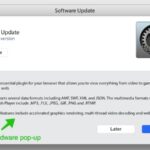Many a time we software engineers want to peek into a window at what the status of a product is within computer code. For example if the article in question is a blouse, on the computer end, an engineer might want to test his software to make sure he is allowed status updates. After all, he wrote the program to process the ordering of, sending to and receiving of each garment for a particular department store that employed his programming services.
Let’s say our software engineer is a typical guy named Mike. His supervisor, a guy named Cesar wants to know where at different points in the journey that that blouse in question embarks on starting from the store inventory and ending in the customer’s house, what the status of it is. Mike has a particular programming style where he will stage that status entry/value in a particular memory space.
In other words through the Internet, the customer will be able to access the program to order the garment she wants and at the same time, a behind-the-scenes manager can access that same program to complete a status report for any particular garment in the system.
When people talk about front-end code in relation to the main body of code, they mean the software that is accessing the main software program to attain products. The back-end code ties into that same body of main code (the exact same one) for inventory tracking and analysis purposes.
For example, let’s make memory spot 0x20f60 our staging memory location. We would simply start out with a list of status option labels. They would include: Color of the Garment; Size of the Garment; Quantity of the Garment in question; Name of the Purchaser; Address of the Purchaser; Price of the Garment. Given these six starter parameters, Cesar, Mike’s boss would choose one to learn the status of one of them.
He would have a pull-down menu titled Status Parameters. Then each of those six parameters would pop-up in that drop-down menu and upon choosing one of them, Cesar would get the status in regards to that particular parameter. For example, if he chose Color of the Garment, the status return might read PURPLE. For the Size of the Garment, the status return might be X-LARGE. The magic of this programming is that each status word will be staged in memory spot 0x20f60, making it convenient to add more parameters at any point.
This programming style of having an exclusive memory spot to stage status values is not only convenient for our software engineer Mike, but it’s also useful for designing behind-the-scenes-back-end-code for our supervisor Cesar.






